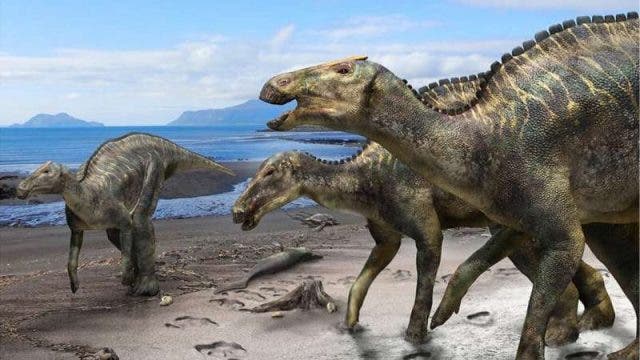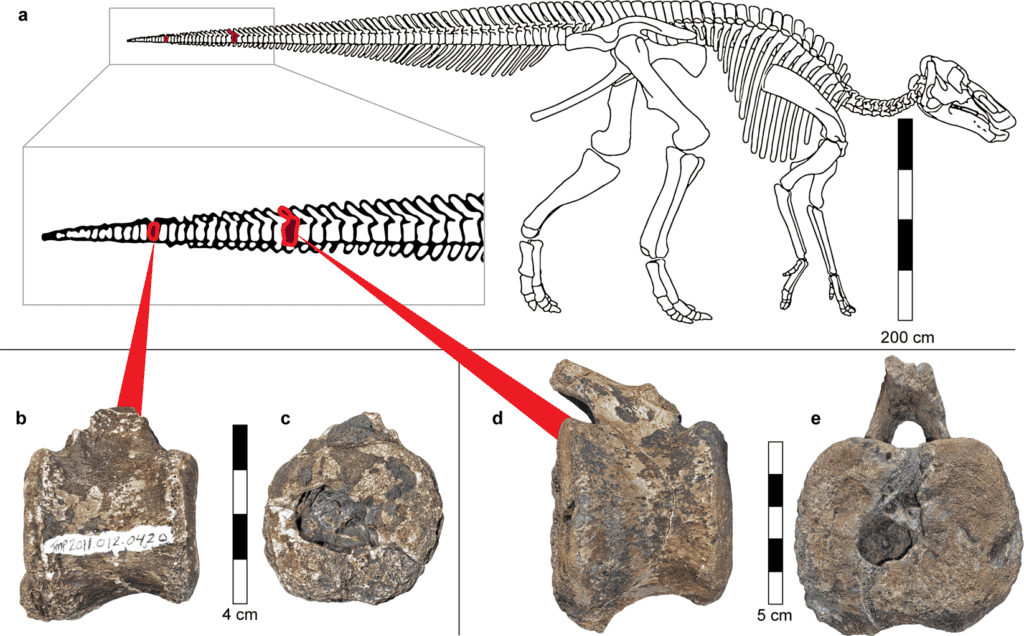
Israeli researchers at Tel Aviv University investigated some peculiar cavities in the tail fossils of a hadrosaur, a duck-billed dinosaur that was excavated from Canada’s Dinosaur Provincial Park. Much to their amazement, these cavities were nearly identical to those formed in humans as a result of a rare, cancer-like disease.
Dinosaurs got sick too
The dinosaur fossils were first investigated using high-resolution computer tomography (CT) scans, which enabled the researchers to form a highly accurate image of the hadrosaur’s tail vertebrae without actually disturbing the specimen. When the CT scans were compared to the bones of two humans, known to suffer from a benign tumor called Langerhans cell histiocytosis (LCH), the researchers were amazed by how well the cavities matched.
“The micro-CT produces very high-resolution imaging, up to a few microns,” Dr. Hila May of the Department of Anatomy and Anthropology at Tel Aviv University said in a statement. “We scanned the dinosaur vertebrae and created a computerized 3D reconstruction of the tumor and the blood vessels that fed it. The micro and macro analyses confirmed that it was, in fact, LCH. This is the first time this disease has been identified in a dinosaur.”
LCH causes distinct lesions in the bones and is sometimes described as a rare form of cancer, although this is a somewhat controversial claim since the disease seems to appear and disappear spontaneously. Most of these tumors, which can be extremely painful to live with, appear out of the blue in the bones of children aged 2-10 years. However, most of the cases disappear in time without any intervention.
Hadrosaurs are a kind of duck-billed dinosaur and one of the most common herbivores of the Cretaceous. Their fossils are also among the most common in the record. What’s more, they’re generally so well-preserved that paleontologists have been able to calculate the dinosaurs’ muscle mass, learning that hadrosaurs were very muscular, likely having the ability to outrun predators. There’s even a so-called “Dakota” specimen, which was unearthed in such good condition that it looks more like a mummy than a fossil — researchers were even able to analyze its ligaments, tendons, and what may be internal organs through a CT scan.
Now, this new study shows that these dinosaurs may have been affected by the same diseases as humans. Previously, other studies found that T. rex suffered from gout and that iguanodons could get osteoarthritis.
Many animals are affected by disease and there’s no reason to believe dinosaurs were any different. However, finding evidence of ancient diseases in dinosaurs is an entirely different matter due to the many challenges involved in identifying telltale signs of in the fossil record.

The authors of the new study claim that their new findings will help improve our understanding of paleopathology, a field of science focused on studying disease and infection in the fossil record.
Although extremely rare, signs of disease in dinosaurs could also provide invaluable insights into how diseases evolved alongside animals. Many diseases affecting humans first appear in animals — among them the now-famous Wuhan coronavirus, which likely jumped to humans from snakes.
“These kinds of studies, which are now possible thanks to innovative technology, make an important and interesting contribution to evolutionary medicine, a relatively new field of research that investigates the development and behavior of diseases over time,” notes Prof. Israel Hershkovitz of Tel Aviv University. “We are trying to understand why certain diseases survive evolution with an eye to deciphering what causes them in order to develop new and effective ways of treating them.”
The findings appeared in the journal Scientific Reports.


